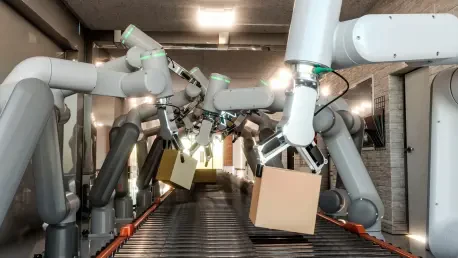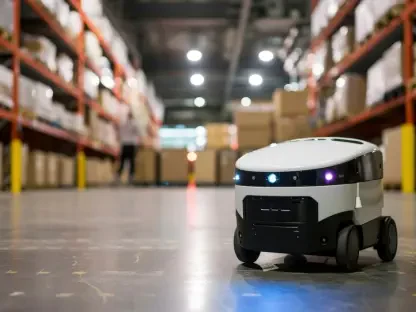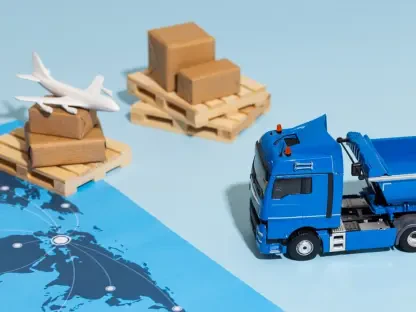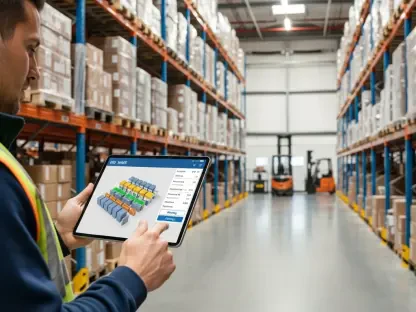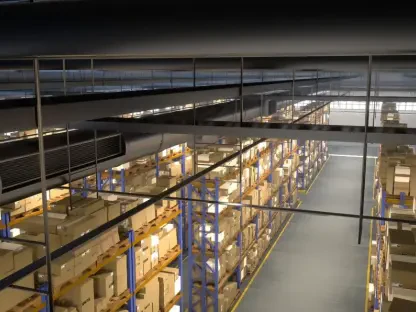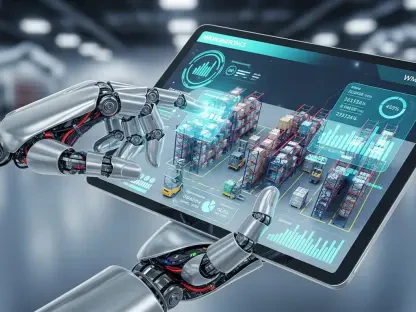What happens when a narrow 100-meter corridor becomes the choke point for a manufacturing giant producing over 24 million industrial plugs and sockets each year? At PC Electric, an Austrian leader in industrial connectors, this logistical hurdle was not just a minor inconvenience—it threatened to slow down a global supply chain where 80% of products are exported. Enter KNAPP’s automated mobile robot (AMR) solution, a game-changer that turned this bottleneck into a seamless, efficient operation, proving that automation is no longer a luxury but a necessity in modern manufacturing.
Why Automation Is No Longer Optional in Manufacturing
In an era where labor shortages loom large and precision demands skyrocket, manufacturers face unprecedented challenges. PC Electric, based in St. Martin im Innkreis, grappled with the inefficiency of manually transporting empty containers across a constrained route between packing and production areas. This manual process not only drained resources but also posed ergonomic risks to workers, reflecting a wider industry struggle to balance rising production needs with limited space and staff.
The push for automation has become a critical response to these pressures. Industry reports indicate that over 60% of manufacturers cite labor constraints as a primary driver for adopting technologies like AMRs. For companies exporting globally, as PC Electric does, the stakes are even higher—every minute of downtime or delay ripples through international markets. KNAPP’s technology steps in as a timely solution, offering a way to streamline workflows while addressing safety and adaptability in tight operational spaces.
Unveiling the Power of KNAPP’s Open Shuttle System
At the heart of PC Electric’s transformation lies KNAPP’s Open Shuttle system, a sophisticated setup tailored for the company’s unique needs. Two AMRs, fitted with specialized load-handling devices, effortlessly manage container stacks up to 1.6 meters tall along the narrow 100-meter corridor. These robots don’t just move goods—they navigate with precision, docking at designated collection and deposit stations, ensuring a fluid transfer between critical zones of the facility.
Safety and reliability underpin this innovation. Equipped with advanced 3D obstacle detection and sensors, the AMRs safely coexist with pedestrian and forklift traffic in confined spaces. Managed by KiSoft FCS software, the system operates autonomously, even triggering rapid-action doors to open on approach. With battery life exceeding six hours, the robots recharge during idle periods, guaranteeing round-the-clock operation without human intervention.
The impact is tangible—manual transport has been eliminated, freeing up staff for higher-value tasks and significantly improving workplace ergonomics. This setup showcases how targeted automation can resolve specific pain points, delivering measurable boosts in efficiency while maintaining a lean operational footprint. PC Electric’s adoption of this technology highlights a blueprint for others facing similar logistical constraints.
A Partnership That Drives Results
Collaboration proved to be the cornerstone of this project’s success. Tobias Aichinger, Head of PLC Programming and Robotics at PC Electric, noted, “The exceptional service and support from KNAPP turned this initiative into a triumph for both teams.” This partnership went beyond off-the-shelf solutions, with both companies working closely to customize the load-handling device for optimal container stability, ensuring the system met exacting requirements.
This case isn’t an isolated win—KNAPP’s AMR technology demonstrates versatility across industries. From electronics to retail, the Open Shuttle system handles diverse loads like trays, cartons, and pallets, addressing a spectrum of logistical challenges. Industry analysts point out that AMRs are increasingly vital for overcoming labor shortages, with adoption rates projected to grow by 30% annually through 2027, starting from this year. Such validation underscores the broader relevance of this technology in reshaping industrial workflows.
Scalability: Adapting Automation to Evolving Needs
One of the standout features of KNAPP’s solution is its adaptability to changing demands. The Open Shuttle system requires minimal construction for setup, allowing manufacturers to configure routes and tasks via KiSoft FCS software in mere days. This rapid deployment means businesses can respond to sudden production spikes without overhauling existing infrastructure, a critical advantage in a volatile market.
For companies eyeing growth, scalability is seamless—additional robots can be integrated into the fleet within hours. Options to rent units rather than purchase provide cost-effective flexibility, especially during seasonal peaks. This approach enables manufacturers to test automation on a small scale, perhaps starting with a single route, before committing to broader implementation, all while leveraging KNAPP’s robust support network to ensure smooth integration.
Safety remains a priority even as fleets expand. Built-in sensors and obstacle detection systems ensure that AMRs operate harmoniously alongside human workers and machinery, minimizing risks in dynamic environments. This balance of flexibility and security positions the technology as a practical choice for manufacturers of all sizes looking to modernize logistics without disrupting day-to-day operations.
Looking Ahead After a Game-Changing Implementation
Reflecting on PC Electric’s journey, the collaboration with KNAPP marked a turning point, as manual bottlenecks gave way to automated precision. The ergonomic improvements and resource optimization achieved through the Open Shuttle system set a powerful precedent for what targeted technology can accomplish. This project became a testament to the potential of AMRs to redefine efficiency in constrained spaces.
For other manufacturers, the path forward is clear—exploring automation with scalable, safety-focused solutions offers a way to navigate labor challenges and fluctuating demands. Piloting a system like KNAPP’s in a single process could serve as the first step, building confidence for wider adoption. As the industry continues to evolve, embracing such innovations promises not just operational gains but also a competitive edge in an increasingly automated world.
